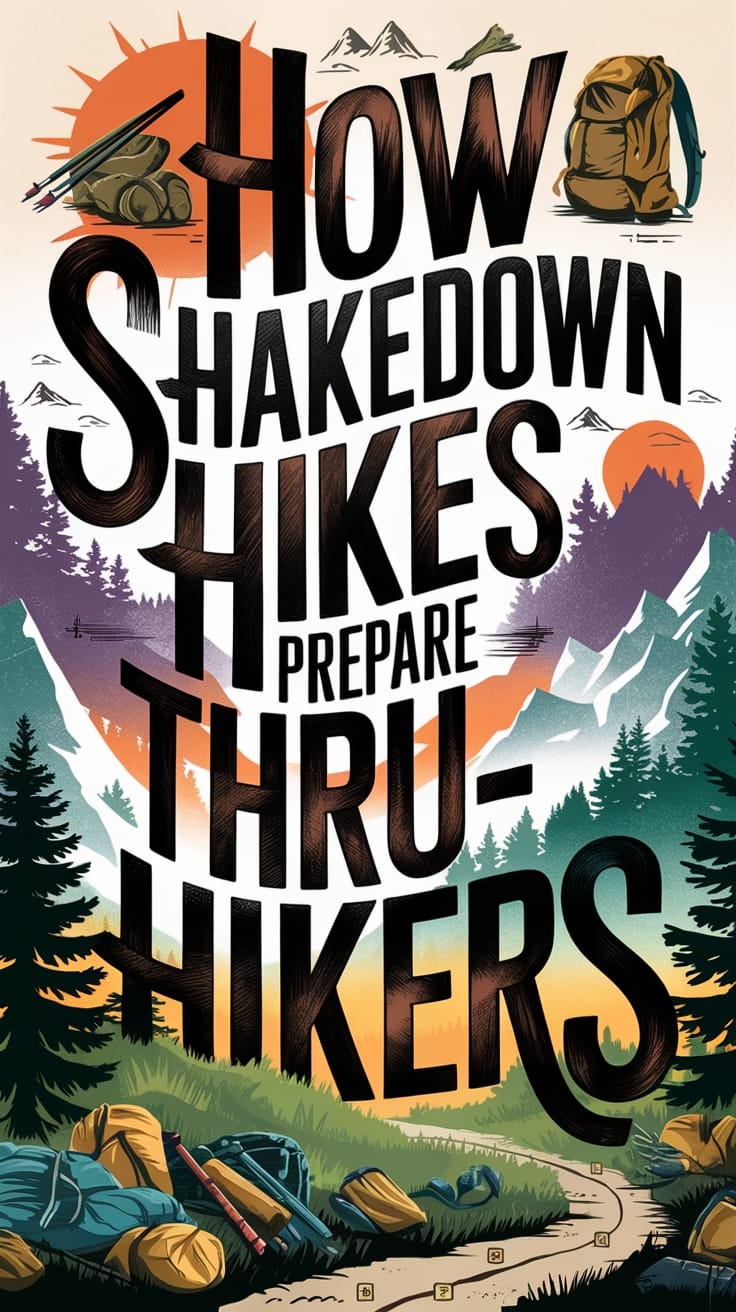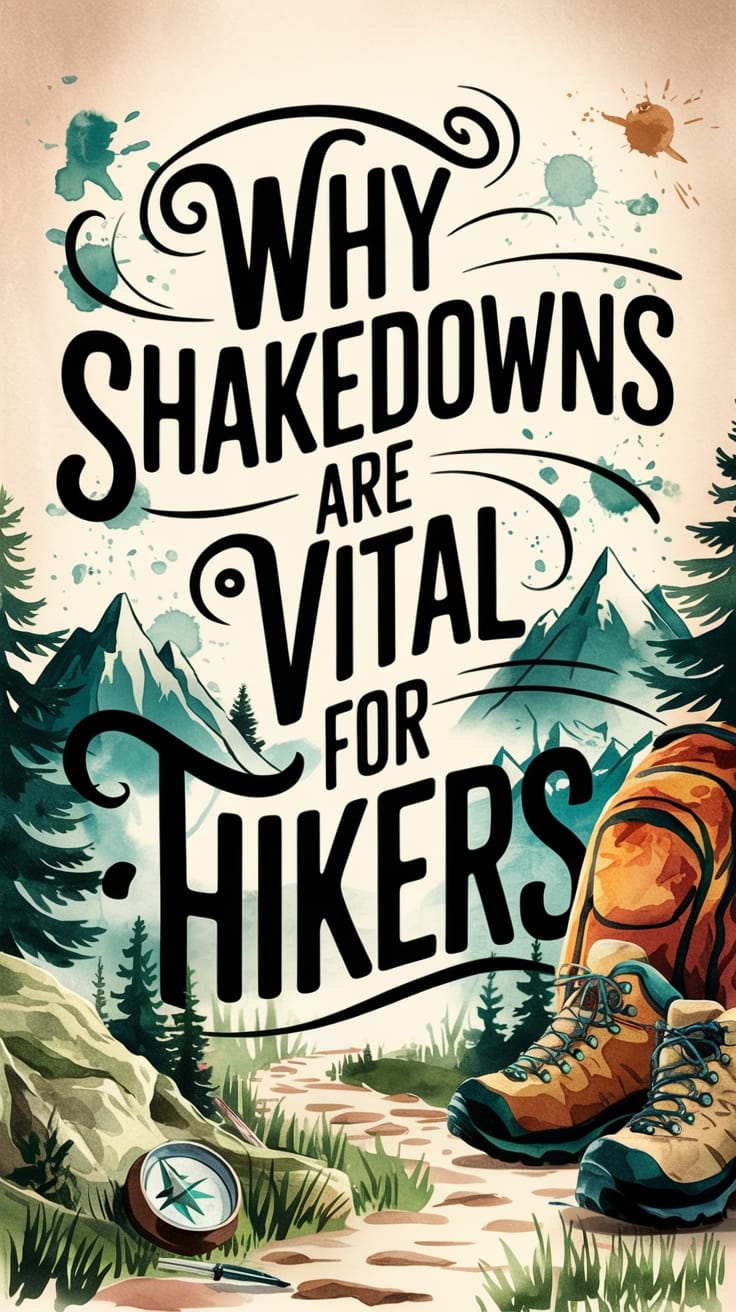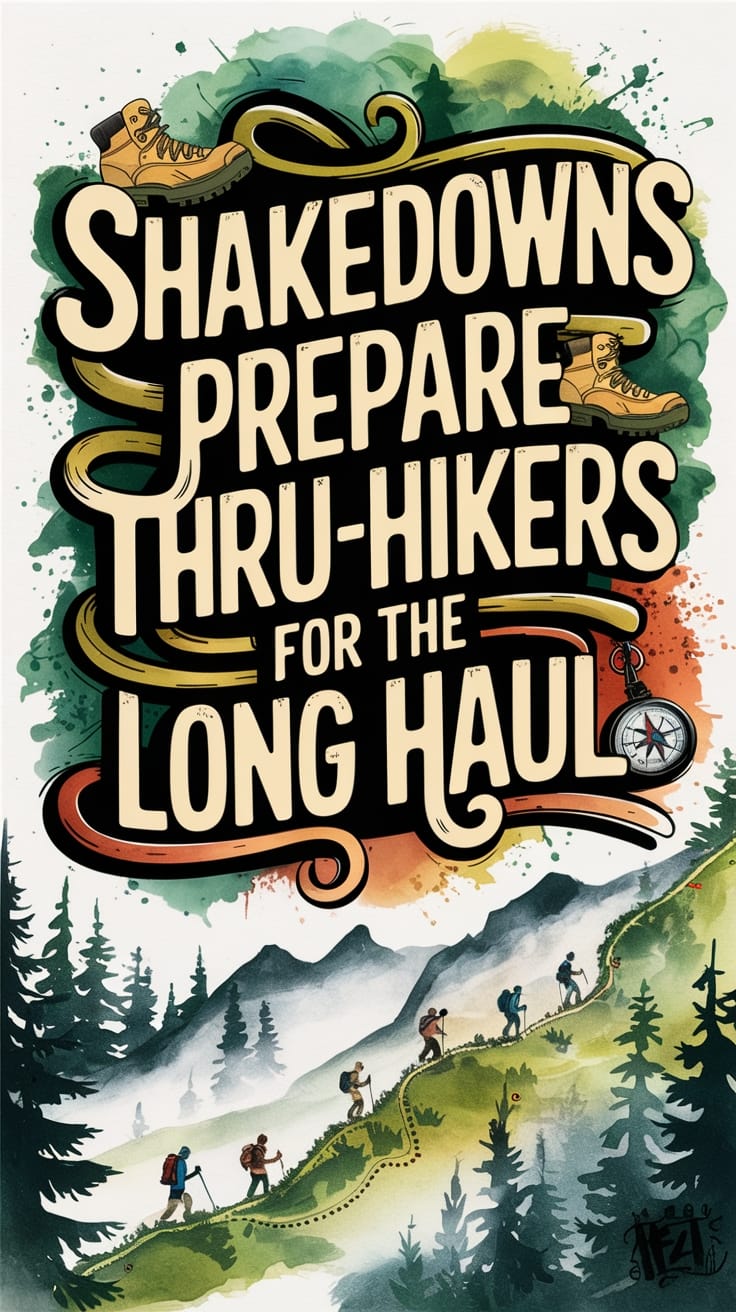For anyone looking to accomplish a thru-hike, planning and prepping your gear and choosing which to keep with you and what can be left is vital to having an optimized backpack and is something everyone should focus on in the months leading to a thru-hike.
All thru-hikers should take the time to pack, unpack, and shakedown hike with their gear, covering many different lengths and night stays to work out any issues or inconsistencies, as this will help you be more prepared on the trail.
Let's look at how they can help pay off specifically for you and help cut down on expenses once on the trail, where gear can cost much more!
Why Shakedowns Are Crucial for Thru-Hikers
There are many reasons why you would choose to perform a shakedown, like if you haven't gone on long-distance hikes before or if you have new gear in your kit that you need to work on using.
Additionally, this process will help you to build up trail confidence, kick-start fitness before the trail, and evaluate where you are and what training you should focus on.
The final benefits are in your backpack and how your body manages the pack and its weight, along with distribution, on your hips, shoulders, and body in general, as this is vital for longer hikes.
- Fully Testing Gear
- Find out what works for you and doesn’t
- See what you need and don’t
- Pack Weight and Gear Loading
- Determine the best load distribution
- Learn how your body handles a load
- Building Overall Trail Confidence
- Gain experience
- Boost your fitness
- Test your body and mind
- Practice navigation
- Learn what you can and can’t handle
So take time and plan a good shakedown trip, whether you are a new hiker or experienced hiker, where you will be forced to use as much of your gear as possible, making sure to carry all you plan to have with you on your thru-hike.
Crafting the Ideal Shakedown Hike: Plan for Success
When planning your shakedown, you want to make sure, if at all possible, that it isn't a day hike. To properly test all your gear, you need a multi-day trip, like 3-4 nights if possible, where you will need to access most or all the gear in your pack.
Just like any other hike though, you do want to have your itinerary, and you want to share it with friends and family to ensure if you have an issue out and away from that some people will be looking for you.
Distance Matters: Test Your Gear Over Realistic Conditions
For many people, this will vary depending on the trail conditions and physical preparedness. For most, a 3-4 night hike somewhere around 50 miles is a solid attempt where you will get lots of chances to work through distance-related issues.
For example, many hikers fall in love with shoes, which they wear daily to break in, only to find once they are in serious mileage each day, they begin to develop blisters and hot spots that require serious maintenance or shoe replacement.
Just because something works for you for a day doesn't necessarily show you over the multiple miles how you will hold up. This time and distance will help find flaws in your approach.
Fully Loaded Backpack: Mimic Thru-Hike Conditions
You want to see how the whole setup works out for you. If you are carrying camera gear, then you want the camera gear with you on this shakedown. You want to find the issues now before day one on the trail.
This will help you see if you have issues with the backpack in carrying or in hot spots it can cause on shoulders, hips, and if it fits the overall needs.
Getting all the gear out helps you go through all those phases of your day, from start to end of day, and repacking back in for the next day. These skills will pay off when on the long-distance trail you chose to thru-hike!
Solo Shakedowns: Test Your Grit and Gear
While it may cause you stress to hike alone, this is genuinely the best way to test out your grit and gear simultaneously. If this should cause you to stress then maybe look to have a hiking partner but travel split on purpose.
The shakedown is to test you and your gear and abilities; having partners and hiking together can lead you to miss queues on gear issues within your own pack.
Additionally, going alone helps you see how you will manage trail days where you don't encounter another soul. Some people quit their hike because they don't know how to handle the isolation.
I have frequently fought mental battles as an introvert over the lack of interaction on remote trails, learn yourself to become stronger!
Learning how you handle this kind of isolation will help you strengthen your resolve when out on the trail and ensure you don't quit due to the mental game of isolation.
Executing Your Shakedown for Maximum Learning
Now you reach the fun part, heading out and enjoying the outdoors while making sure the gear you bring will bring you success on the trail. This will be where you need to think about what items you focus on testing and evaluating, which will be discussed below!
Key Areas to Assess During Your Shakedown

Whenever you do a shakedown hike, you want to bring along some way to note things, whether on a phone app or a notepad. You want to gather some useful data to help evaluate the performance of your gear and ensure that it works as expected.
Executing Your Shakedown: Focus on Key Areas
Your biggest measurement is in the overall sleep system and shelter, and you are looking to make sure it is easy to set up and that there are not too many miscellaneous parts that could be lost or misplaced that are hard to replace on the trail.
For your sleep system, you are looking for the temperatures and overall comfort level. Make sure you bring a thermometer to help get accurate temperatures in the evening and in the morning to gauge sleep gear performance between your sleep system pad and quilt or bag.
Specific Testing Goals: Fine-Tune Your Approach
If you want to attack this shakedown with purpose, you should do numerous gear shakedowns in the months leading up to your thru-hike, but none of them should go to waste. Instead, watch for hidden or undercover issues in your mentality and approach to the trail.
What you may uncover could shock you as many hit the trail with personal stubbornness to a set amount of miles they "have" to do in a day. This approach is what leads to fast physical breakdowns. You have months. Let your body adapt, grow, and strengthen before making significant pushes.
Another thing to watch is the amount of food you eat. Weigh and measure the foods you leave with and what you come back with to get a better idea of what you eat, what you like, and what the "not until dying" foods are and modify your carry.
One of the other things that occur is that people carry every part of a first aid kit, leading to pounds of additional gear you will not usually need on the trail. You want to dial this more in with the essentials to get to the next town.
Dial in Your Gear: Remove Redundancies
The next part will be how to get to the right gear in your pack and what you will want to start by removing the duplicate purpose items from your gear. This takes some consideration, but you should be able to find and drop some gear out easier than you think.
Eliminate Duplicate Items
You want your gear to help perform more than one task, ideally, like having a trekking pole tent. This means you can use the trekking poles all day, and then while resting and sleeping, they are used to hold up the tent, which drops the tent pole weight from your pack.
If you are a coffee drinker, for example, don't bring an extra "coffee cup" and instead use the pot used to heat the water as the coffee cup. This may seem odd at first, but you will be happy to carry less weight the longer you are on the trail and will find you will be tired and not want to carry and clean two items each time.
I prefer to bring a toenail trimmer as I don't want to deal with hangnails or other issues on the trail related to something simple. You can easily find a trimmer with other items, similar to a Swiss army knife, to help cut down on one-off items.
I like pillows that aren't fully inflated as they are never comfortable personally. Instead, I purchased the Zpacks pillow stuff sack, which holds my quilt while I hike, and once emptied, I turn inside out and add my puffy for a super comfy pillow without bringing more gear.
If you are planning to wash up between towns, then bring a biodegradable soap like Dr. Bronners can serve for shampoo, body wash, laundry detergent, and dish soap, but please follow LNT principles and keep this away from all areas as covered.
What you are looking to do is to cut out all items that duplicate the purpose of another you are already carrying, while in normal life, this may be dandy. On the trail, it's just additional weight and work.
Overcome Fear-Based Packing: Focus on Essentials
Hikers, especially new hikers, pack their fears and try to carry something for every eventuality, which is an effort in mental and physical exhaustion.
You must remove your fear from the equation as it limits your performance and preparations. It tells you to bring "this" or "that" because something may or may not occur.
Instead, your focus should be on the inevitable, and things happen over 2000+ mile hikes, no matter your skill level. This would include stuff to manage bumps and bruises, scratches and cuts, upset stomachs, and, yes diarrhea.
Carrying items to manage a gear fault, like a tent tear, is far more important to your overall enjoyment and among the things you would want to plan for. If you have a water filter, bringing a few water tablets for emergency use or additional seals may be in order but you must pare it all down.
Be Creative: Optimize Budget and Gear
As you may already know, aiming to go ultralight is, at best, pretty darn expensive! With the DCF ultralight tents coming in at $600+, just acquiring a complete set of ultralight backpacking gear could be more expensive than your hike itself.
The real question is why, why let this number be your core value?
Instead, think about being creative with your money and finding the biggest bang for the money you have to spend. You can spend a lot of money on your big three to drop lots of weight but then manage the rest of the gear at less cost and minimal weight differences.
Gear like a DCF pack liner or pack cover can be costly, and you can relegate them to useless and expensive gear by adding a simple trash compactor bag to the inside of your backpack to keep necessary gear dry.
Move on from the old Nalgene bottle approach and switch to normal plastic bottles like SmartWater, which both fit on a Sawyer filter and are incredibly light in their regards, along with simple to replace in town as they age.
Just think outside of the box, and you will find ways to make the gear work for you without going into debt.
You don't need $4000+ in gear to thru-hike, and many can assemble complete gear lists for under $1000 that are very light in weight!
Shakedowns for Experienced Hikers: Continuous Improvement
While many beginners will be told to do these outings experienced hikers should do them all the same as they traditionally are adding and changing gear in between trips or from one season to the next.
Experienced hikers can suffer from a belief that they already know the circumstances and that they won't be caught off-guard by issues and situations but this can cause them to find catastrophic gear failures by not preparing and going through their paces prior.
No one, experienced or fresh, wants to end a trip suddenly due to poor prior planning and preparation that could have been done without issue.
Just because you have years of previous experience, treat the trail with respect and always test gear before it is needed.
Key Items to Assess: Focus Areas During Your Shakedown
When you are starting to take on the shakedown, you have a few key items you want to watch for and note along the way. These will help you finalize everything over time and lock in the gear you will bring and the clothing you will wear on the longer trail.
Footwear Comfort
- Did you have any hot spots or blisters?
- Are you experiencing aching or pain after the day's hike?
- Were the shoes comfortable to wear and had good ankle support?
- Did your shoes become too tight due to swelling?
- Did your toes hit the front of the toebox?
Pack Balance and Fit
- Did you do a good job of distributing your pack weight?
- Is it top-heavy or lopsided?
- What is the ideal size for your backpack?
- Is it necessary to go to a smaller or larger version?
- Did it fit well?
- Hot spots or any chaffing?
- Does your power source or battery backup last long enough? Was it enough for your needs?
- Was your headlamp bright enough?
Gear Usability and Necessity
- Did you use all the gear you brought with you?
- Were there items you could have left at home?
- Forget anything?
- Did you feel safe/comfortable with your gear?
- Were you cold, did you need warmer clothing choices?
Food and Water Management
- Did you pack too much or too little?
- Was your water capacity enough?
- Did your food agree with you and give you enough calories?
Post-Hike Pack Shakedown: Refine Your Gear List
You should be taking time to go back through your gear and stripping out the gear you didn't use on the trip to see why you brought it and whether you should keep it still in the kit for the upcoming trail.
Each time you go through this process you want to look for items that can do more than one role to help you cut down on gear you have to carry with you, many times you can find other things to use from a hiker box or in town for a short stint without carrying it all the time.
Final Gear Reflections: Prepare for the Big Trip
Shakedown hikes are important for new hikers, experienced hikers, and anyone who wants to be prepared with the right gear.
You should always do your shakedown hike before you head out on a big trip so that you know what kind of food, water, and clothing to pack to have enough resources while hiking.
As well as making sure all your gear is comfortable, fits correctly, and will serve its purpose when needed.









